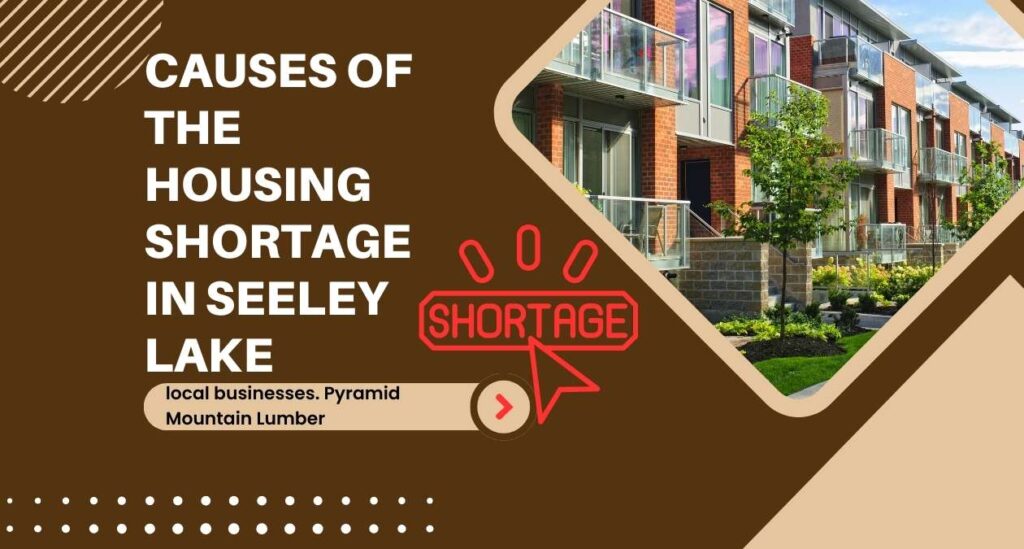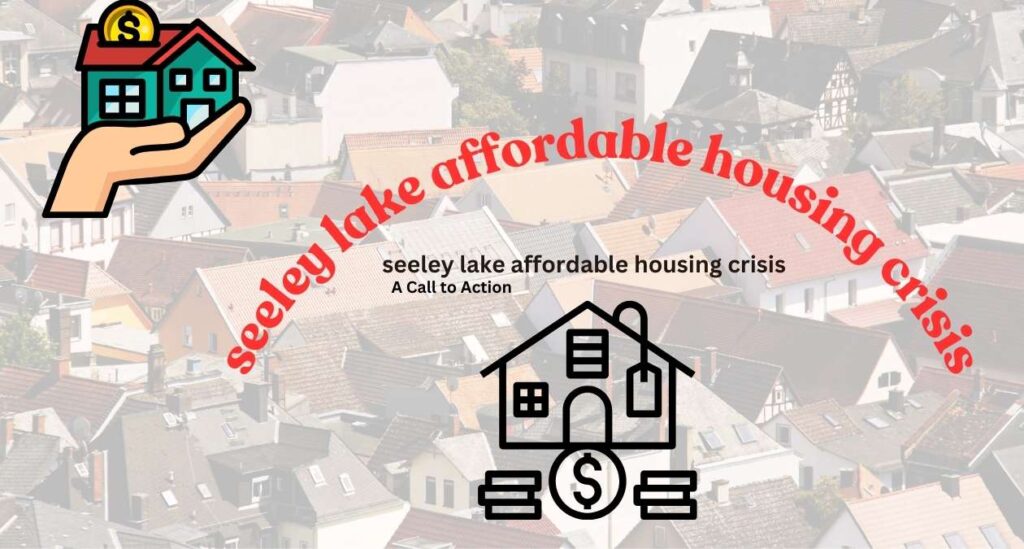Seeley Lake Affordable Housing Crisis , Montana, a picturesque slice of paradise nestled in Missoula County, is grappling with an economic disruption that has nothing to do with political battles or environmental changes. Instead, the town’s problem stems from its lack of a centralized sewer system, which is causing a ripple effect that impacts the community’s housing affordability and local economy.
Causes of the Housing Shortage in Seeley Lake

The reluctance of Seeley Lake’s residents to implement a centralized sewer system has resulted in a housing crisis that prevents the construction of affordable housing. Local officials have pointed out that while high-end septic systems could theoretically service multi-family dwellings, they are not cost-effective for the type of housing developers are looking to build in the area. The only viable solution, it seems, is a centralized sewer system.
This lack of affordable housing has had severe repercussions for local businesses. Pyramid Mountain Lumber, the town’s largest employer, has been forced to close its doors after 75 years because it couldn’t attract enough workers. Todd Johnson, a third-generation lumber mill worker whose grandfather started the mill in 1948, faced the heart-wrenching task of informing his crew that the business was shutting down.
“To make the announcement to the crew was probably the toughest thing; I’ve got friends, family, you know, generations, good friends that work here. I had to tell them we’re going to shut the doors, Johnson told ABC News. “I’ve never drawn a paycheck from any other business in my whole life. I started here in sixth grade. This is all I’ve ever known.”
Impact on Local Businesses and Workforce
The closure of Pyramid Mountain Lumber is not just a blow to the workers and their families but to the entire community. Missoula County, once home to multiple sawmills and a thriving lumber industry, will see the end of this legacy with the shuttering of Pyramid Mountain Lumber. The economic fabric of the town is at risk, as Johnson highlighted:
“Our payroll just here to our employees is over $6 million a year. You take that out of this economy, it’ll change the fabric of the town. There’s no doubt.”
Other local businesses, like Rovero’s Hardware, are also feeling the pinch, running on skeleton crews as the busiest season approaches. Dee Baker, owner of Grizzly Claw Trading Company, noted that this is a long-term issue exacerbated by the lack of affordable housing.
Community Responses and Proposed Solutions

The affordable housing crisis in Seeley Lake is not an isolated case. Montana, as a whole, has been grappling with similar issues for years. In Boulder, Montana, a 2016 fire that destroyed two mobile homes and damaged two others underscored the dire need for affordable housing. The local government’s attempt to regulate mobile homes was met with fierce resistance from residents, highlighting the complexity of addressing such issues.
Residents across Montana have shared their struggles with finding affordable housing. Becky Robinson, a bank teller in Ennis, lived in an uninsulated pre-1976 rented trailer, unable to afford a home despite working her entire adult life. Her story is a testament to the broader challenges faced by many Montanans.
“Everything was either so expensive I couldn’t afford it or so old you’d have to tear it down and start again,” she said.
Challenges in Infrastructure Development

Addressing the affordable housing crisis in Seeley Lake and similar communities requires overcoming significant infrastructure challenges. Implementing a Centralized Sewer System is the foundational step that will enable the construction of affordable housing. Without it, developers are unable to cost-effectively build multi-family dwellings.
- Community Engagement: To address local resistance, fostering open dialogue about the benefits of a centralized sewer system is crucial.
- Funding Obstacles: Securing federal and local funding will be essential to cover the costs of infrastructure development.
Government Initiatives and Policy Changes
Government support plays a pivotal role in addressing the housing crisis. The Montana Department of Commerce has initiatives aimed at bridging the gap between income levels and housing costs. Policies such as tax incentives for affordable housing projects and grants for infrastructure improvements can make a significant impact.
Collaboration with organizations like the National Affordable Housing Network (NAHN) can also drive progress by providing expertise and funding support.
Convincing the Community
To convince the residents of Seeley Lake to support the implementation of a centralized sewer system, it is essential to highlight the long-term benefits. This infrastructure change will not only address the affordable housing crisis but will also attract businesses and boost the local economy.
Conclusion
The affordable housing crisis in Seeley Lake is a pressing issue that requires immediate action. By taking proactive steps and working together, the community can overcome this challenge and secure a prosperous future for its residents.
Now is the time for Seeley Lake to embrace change and invest in the infrastructure that will pave the way for a brighter, more sustainable future.


This is such an important issue that needs more attention. The lack of a centralized sewer system in Seeley Lake seems to be at the heart of so many problems, from housing affordability to the local economy. It’s heartbreaking to hear how this is affecting people’s ability to find decent homes and sustain their livelihoods. The ripple effect on small businesses and the community’s fabric is undeniable. I wonder if there are any ongoing efforts or plans to address this infrastructure gap? It feels like solving this could be a turning point for the town. What do you think is the biggest barrier to making this happen? I’d love to hear more about the community’s perspective and any potential solutions being discussed.